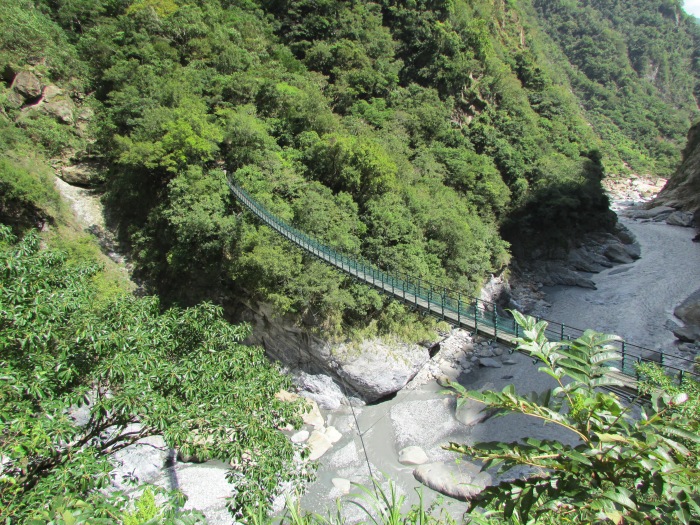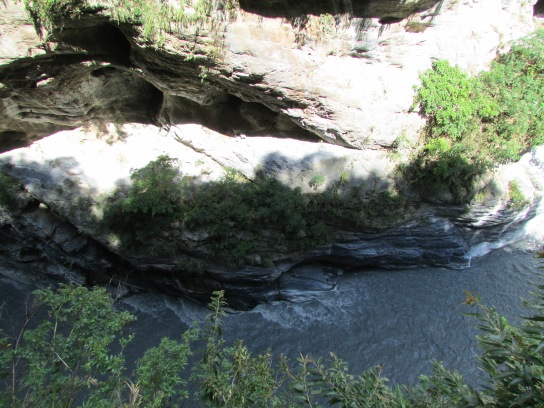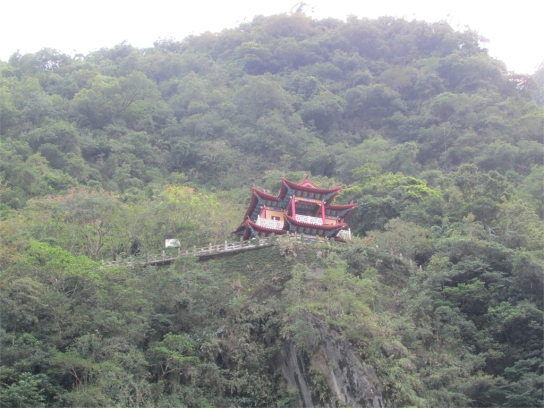We’re driving through a huge Taiwanese cemetery full of marble Buddhist style tombstones. Leo, our guide, tells me people in the island call cemeteries night clubs, since all the ghosts are said to appear here at night. Taiwanese people are very superstitious and its one of the reasons why they don’t linger for long in cemeteries. We just left Hualien, a city famous for its marble stone which can be seen everywhere in hotels, paths, public buildings and as I can see now large marble family tombstones. I’m also told is fairly common families build a grave in advance, like a rented property to the other life. This city is also the Eastern Coast largest urban area, attracting waves of tourists looking for its laid-back feel and like us today to give a peek to Taiwan’s biggest natural jewel, Taroko National park. After a quick breakfast of Chinese pancakes, where I incredibly found the Turkish backpacker which I last encountered going to Wulai, we did a smooth drive north in the direction of Taroko. I feel surprised by how strong the sun is here than in north Taiwan and I later discover this is due to the lack of air pollution here to block the sun rays. We take the famous Central Range Highway that crosses Taiwan’s central mountains and go through a cute Taroko village.
Taroko, the Magnificent and Beautiful Realm of Truku
The Taroko or Truku people, almost 21,000 people, lives mainly in the mountainous regions of the Hualien preferring to live in higher grounds than the majority of Amis people in the region who historically preferred the plains and coast line. Once mountain climbers and hunters per excellence, most of them now work for the Taiwanese government, with most of the employees in the park being from this people. The first glimpse we had of the magnificent Taroko National Park peeks was at the incredible Tunnel of the 9 Turns, after the park’s entrance. Taroko means “magnificent and beautiful” and its true that what followed was a stunning drive as we marvelled in the green mountains surrounding the Liwu river. The clash between Philippines ocean plate and the Eurasian plate over millions of years moved all this mass of rock upwards creating this huge marble mountains. This together with the slow passing of the Liwu River created what is considered one of the most spectacular canyons in the world, the Taroko Gorge. Almost 20 km of stunning cliffs, in some parts over 1000 meters high. It was mesmerising and the blue sky made the perfect contrast with the mountain vegetation pulsating with life, making the marble clears between it shine brightly. Here people can find a diverse range of birds, insects and Taiwan’s largest mammals such as the Formosan monkey, Sambar Deer, wild boars and the very illusive black bear. This last one was known by the Taroko as “King of the Mountain”, and its white chest patch of hair represented the moon. Sadly we didn’t encountered any of them. The river might’ve took millions of years to carve the strong limestone rock but I couldn’t help but wonder how did people here managed to build this road. Leo explained me that in the 50’s Chang Kai-Shek, the exiled general and leader of Taiwan, decided to build a road across Taiwan that passed the Central Mountain Range. He passed this herculean task to the National Army Veterans that came with him after fighting long against Mao Zedong communist army. American engineers predicted they would take 10 years to build the road but amazingly they took only four. A feat that had his coast, as explosions, accidents, land-slides coast the lives of 226 workers. To honour those workers the beautiful, Shungsheng Shrine, was built, carved into rock and with a permanent stream of water from the mountain calmly passing between him and remembering how hard it is for men to conquer nature. After seeing the shrine we headed to the also famous Tunnel of the 9 Turn, a section of the park where the cliffs are only 10 feet away from each other and where people can walk through Jiuqudong tunnel in the mountain and admire the marble cliffs. We then passed the 100 lions bridge, with its small resting lions and reached the Swallow Grotto, where the river makes an almost perfect 90 degrees turn. Right in front of it it’s the Lovely Mother Bridge, named after a mother that used to bring food to his son working on the road and all his companions. When she died the workers named the bridge after here. Also worth of note is the Frog King rock, which with its features and the small viewing platform on its top really deserves its name.The clash between Philippines ocean plate and the Eurasian plate over millions of years moved all this mass of rock upwards […] created what is considered one of the most spectacular canyons in the world, the Taroko Gorge……


Walking on the Trail of the Children of Mountain
I believe what makes the Taroko National Park unique is that not only it has marvellous natural beauty, but it also mixes it with interesting cultural sights and history……We then passed a chilling suspension bridge, where only professional climbers can cross in order to complete its dangerous mountain trail. Therefore I and Jen decided to embark on foot to a more accessible path, the Lushui trail. This was certainly one of my favourite parts of the day, walking through the sunny forest filled with butterflies and an amazing view to the Liwu river valley. Like the Atayal, the Taroko were also fierce warrior’s known for their headhunting, and also imposed fierce resistance to the Japonese invading forces, looking to explore the mountain Cyprus and Oak trees. Armed only with their bows, blades and knowledge of the mountain trails the children of the mountain as they are known, must’ve been a tough opponent for the more modern equipped Japanese army. Something visible in some stone monuments in the forest to Japanese soldiers that got their train of thought interrupted by some Taroko blade. The trail used to be used by Taroko to cross the mountain and in some parts is width isn’t more than 2 meters. Something that makes the crossing of the Lushui terrace, a path in the outside of the mountain, a vertigo prone experience, although with a stunning landscape. After 20 minutes of crossing many dark small tunnels and suspended bridges we reached the Lushui Taroko village where we indulged in a nice Beef with Black Pepper lunch before heading back.

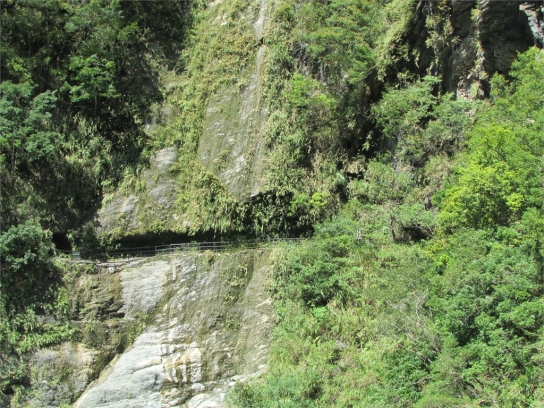
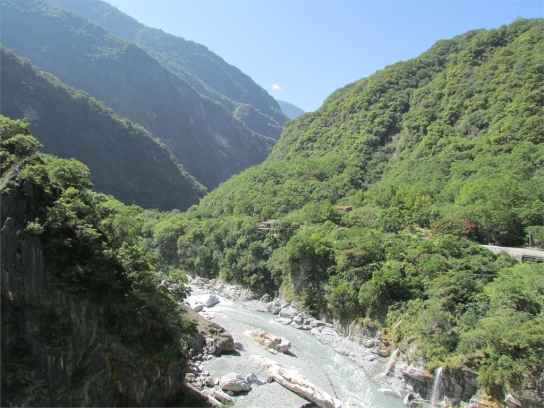
Yuli Taki
After leaving the park we stopped at Taroko village to have a talk with Yuli Taki, a 60-year-old Taroko weaving Master. Impressively Yuli can speak Taiwanese, taroko and English and while sharing some coffee with us in her workshop, she told us how she learned her craft from her grandmother after her mother died when she was 5. “When a Taroko woman get 14 she has to start weaving in order to become a grown woman” , she said showing us some of her works, “ I sued to hate it, since weaving can take 5 to one month to complete. But after my grandmother died I understood I should carry on the tradition”.Since aboriginal people don’t have written language, all their costume have to be passed by memory something that makes even more impressive the work of passing this complex patterns into something tangible……
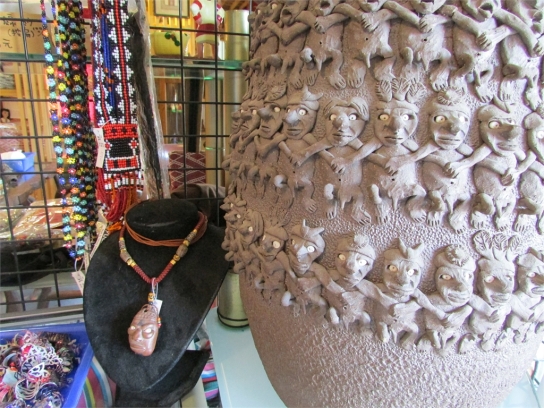

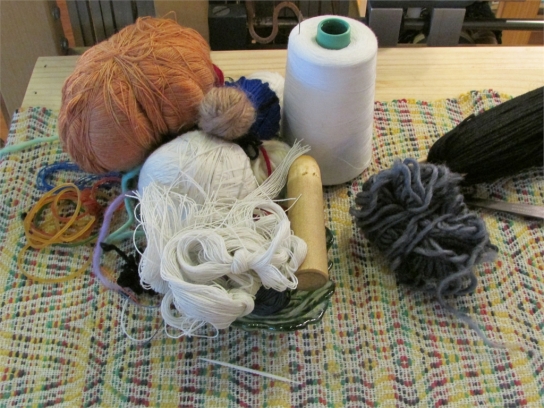

So Much Salt in the Sea are the Portuguese Tears
After it we were decided to make the most of the good weather, heading to the Qixingtan Scenic Area, a beautiful bicycle rail that follows the coast. We couldn’t resist the completely cliché tandem bikes for couples, and for 150 NT we rented one to follow the beach.“So much of the salt in the sea, are Portuguese tears” remembering how many Portuguese sailors perished trying to reach distant lands like Formosa. However, here I believe much more aboriginal suffering passed from the mountains to the sea……
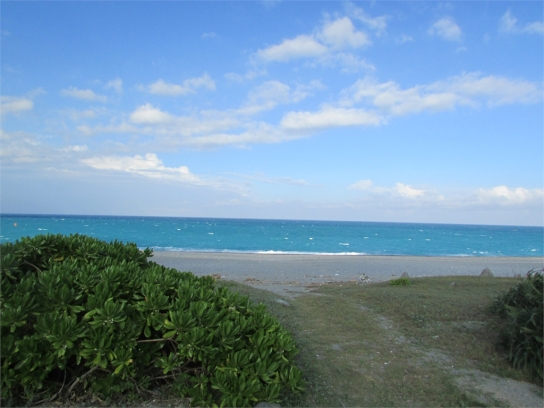
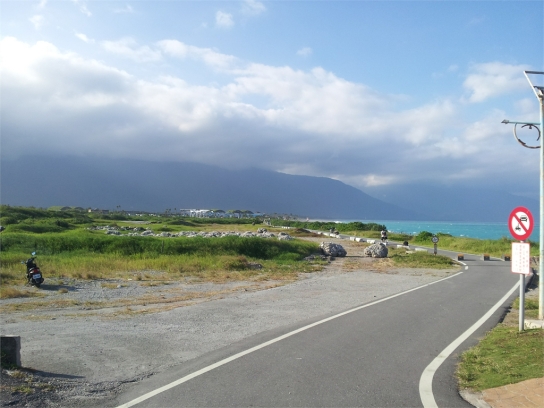
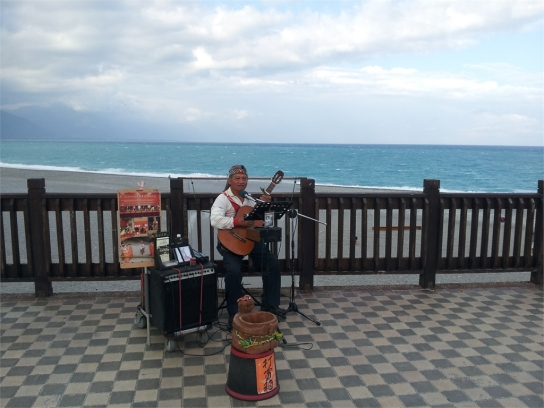

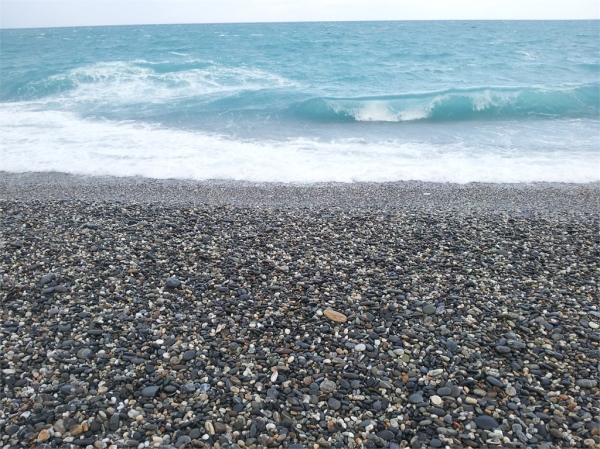
Editor’s Pick
- Living like an Atayal
- Tminun, let’s weave a rainbow on the face! It’s the eternal mark of we Truku that can never be removed!
For more interesting indigenous stories? Follow us now on our page!
Photos via Nelson Moura]]>

